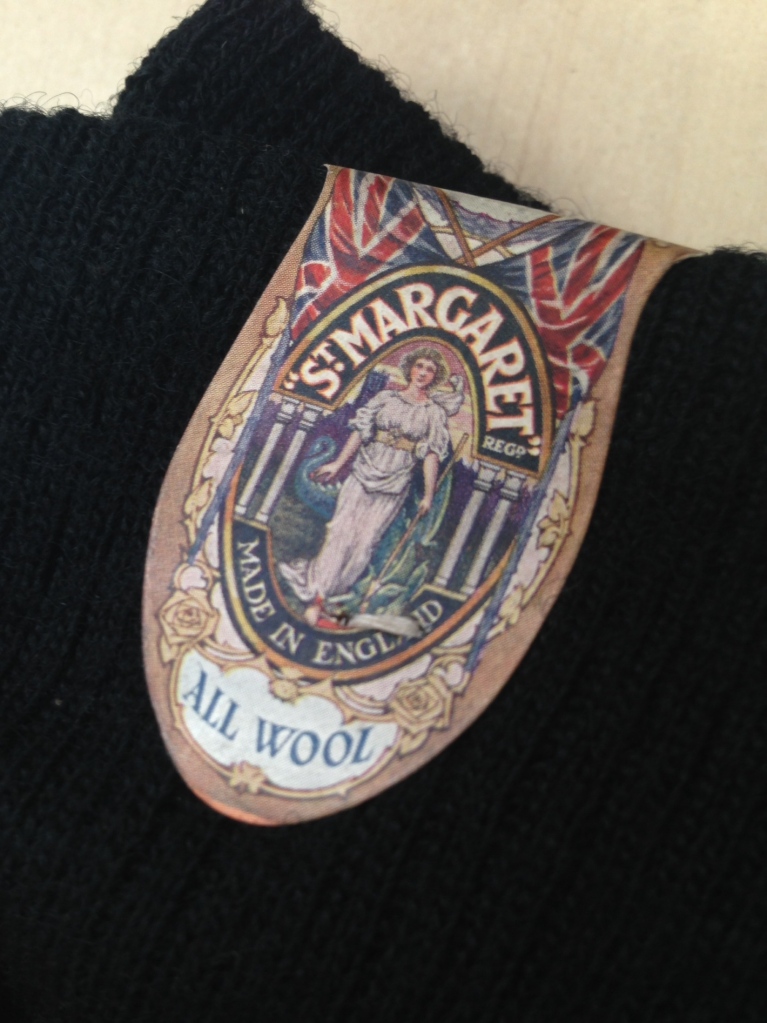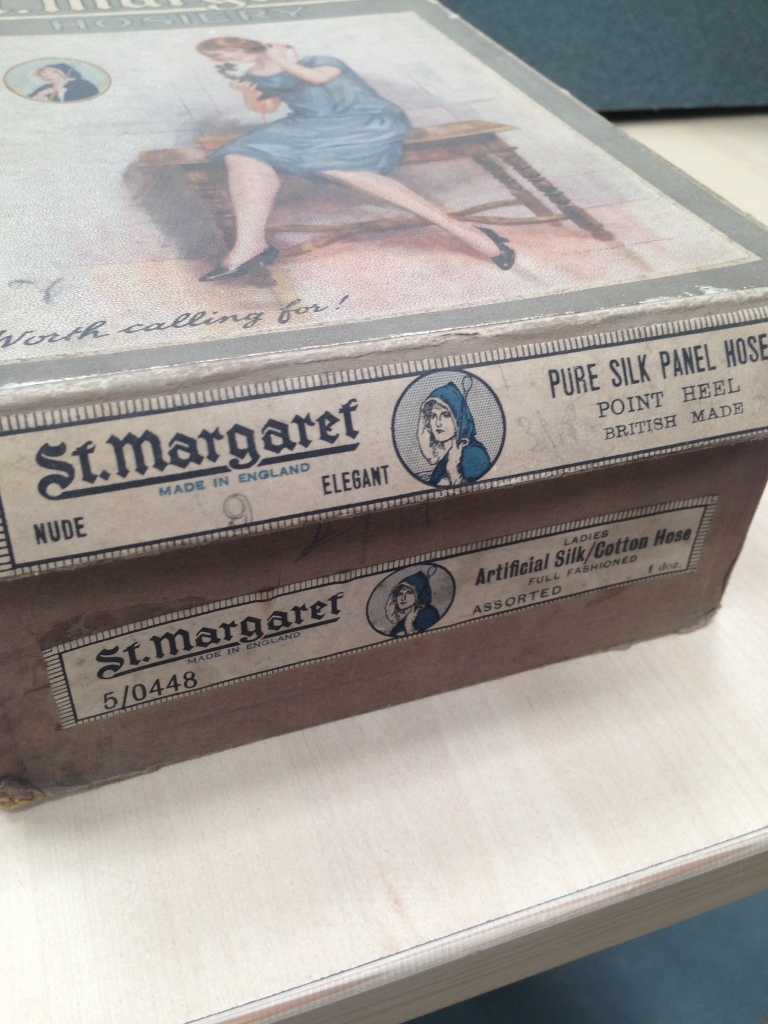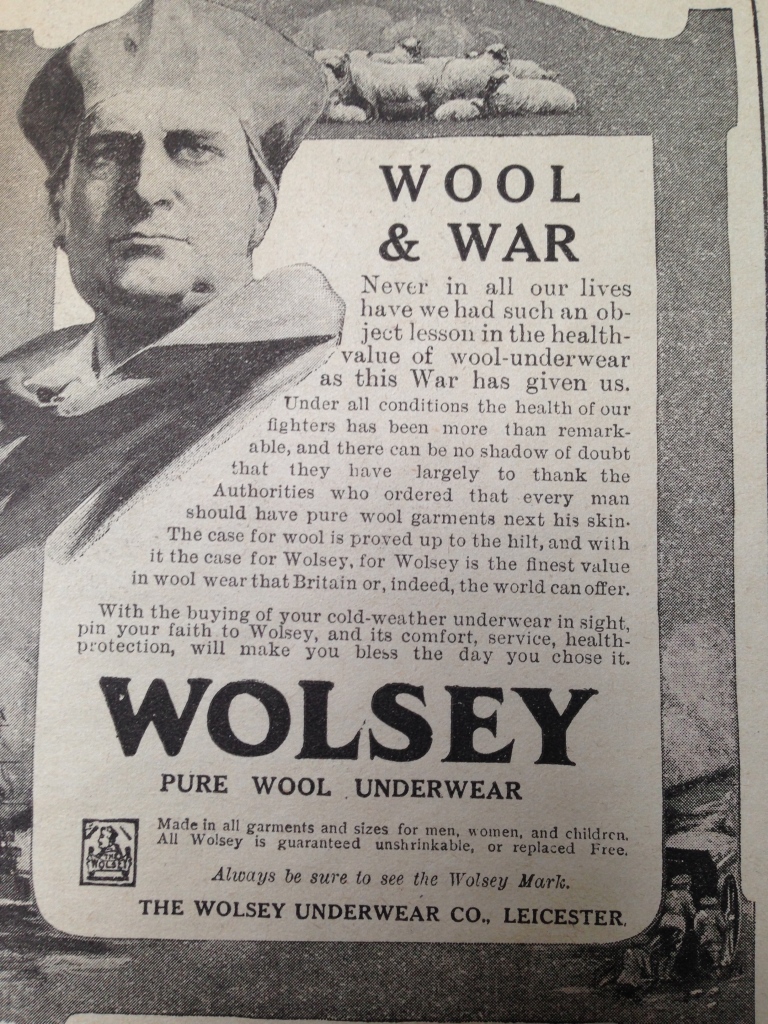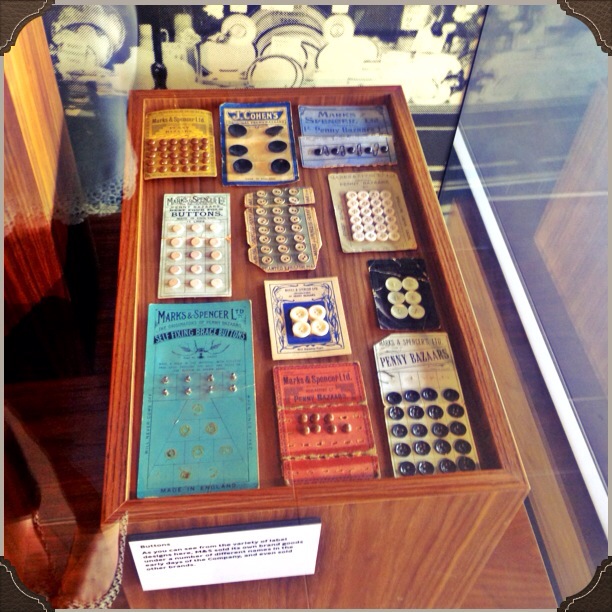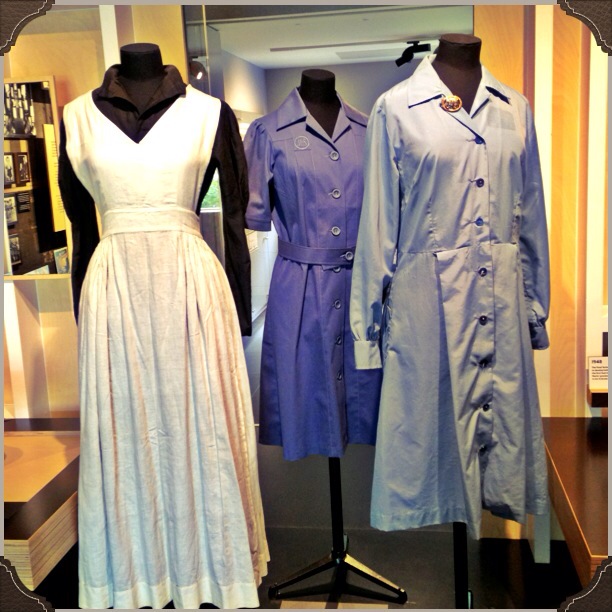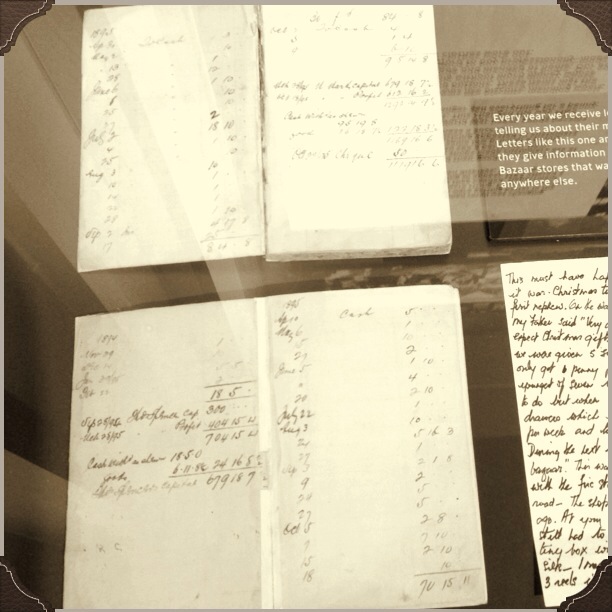Category: Conferences and Workshops
Audio: Purity, Piety and Pants – The Religious Body in Early-20th Century Underwear Marketing
I’m thrilled to be able to share this audio file of my recent conference paper with you.
This recording is by no means the finished article but I have noticed that the subject really captures people’s attention so it felt right to share it. There is a lot more work and research to be done on the subject – especially concerning anxieties around the adulteration and cleanliness of fabrics.
In the meantime, I hope that you enjoy listening and I welcome any thoughts or ideas in the comments below.
Thanks to the wonderful Katrina Maitland-Brown for making this recording and to everyone at CHORD for the opportunity to speak at their workshop. As always, massive thanks to the team at Walsall Museum for their ongoing support.
References:
C. Willett and Phillis Cunnington, The History of Underclothes, (London: Faber, 1981).
Keith Jopp, Corah of Leicester 1815-1965, (privately printed, 1965). (read the PDF here)
C.W Webb, An Historical Record of N.Corah & Sons Ltd., (privately printed, 1947). (read the PDF here)
Elizabeth Ewing, Everyday Dress 1650-1900, (London: B.T Batsford Ltd., 1989).
Also see the ‘About’ section of the Wolsey website for their take on the brand’s history.
Purity, Piety and Pants
Several months ago, I (half-jokingly) mentioned my plans to write a paper about religion and underwear marketing. It was one of those situations where I knew there was something in the idea but it took me a while to get to the bottom of exactly what it was. After mulling the idea over and getting over the fits of giggles that struck me down every time I saw Cardinal Wolsey’s face on a pair of knickers, I decided to seriously pursue the idea.
I submitted an abstract for the Centre for the History of Retailing and Distribution workshop on retailing and the human body and was delighted when I was told that it had been successful. Since then I’ve become immersed in the world of early-twentieth century underwear, Thomas Wolsey and St. Margaret.
The CHORD workshop ‘Retailing, Commerce and the Human Body: Historical Approaches’ takes place on 14th May 2014 at University of Wolverhampton. Visit the CHORD webpage for more information.
I’ll publish a summary of my paper on here after the event, but for now I wanted to share some of the images I have gathered whilst researching the paper:
As always, massive thanks to the team at Walsall Museum for allowing me to study and photograph these items!
Museum Metamorphosis @ University of Leicester, 5&6 Nov 2013
Museum Metamorphosis was the 2013 PhD conference organised by University of Leicester’s School of Museum Studies PhD candidates. Over the two days, change and adaptation in their many museological manifestations were discussed, debated and developed.
Whilst I wouldn’t strictly consider myself as operating beneath the banner of ‘Museum Studies’, it is one of the key disciplines influencing the Hodson Shop Project (yep, after months of debating my disciplinary allegiances, I’ve finally settled on ‘interdisciplinary with roots in dress history’).
Before the conference, I had read some texts and journal articles, mainly the ‘classics’ of the field – Vergo’s The New Museology and the work of Susan M. Pearce spring to mind. Interestingly, I’ve recently come across a wealth of museum studies article around biography in the museum. But it wasn’t until attending Museum Metamorphosis that the true breadth, possibilities and insight offered by the discipline became clear.
I won’t give detailed coverage of every paper, the conference was liveblogged in full and you can find the various posts here. Instead, what I want to do is provide a quick summary of my personal highlights – the moments when something clicked in my brain or a paper really captured my imagination.
The first thing that struck me was how well the event had been branded – there was an eye-catching logo that adorned everything from event programmes to the stylish bags presented to delegates arriving at the event. Actually, let me take a moment to talk about the delegate bags: I have never been to a conference before with specially designed, ethically produced bumbags. Yep, you read that right. They were pretty cool and could be turned into more conventional shoulder bags with a simple retying of the strap. Quite ingenious. There was a lot of creativity at play – with ‘evaluation trees’ set up in the conference rooms and brilliant illustrations of the organising committee inside the programme. It was also clearly a truly international conference with speakers travelling from across the USA, Europe and Australia to take part. Even papers by those based at UK universities featured museums in places as far flung as Hawaii.
The day one keynote was delivered by Sharon Heal, the editor of Museums Journal. It was a rallying cry to museum professionals, encouraging them to work with communities and contribute to addressing social inequalities. It was rousing stuff that provided a clear sense of purpose and momentum for the conference. Sharon’s suggestion that museums need to be ‘less like The Archers and more like Educating Yorkshire’ got plenty of laughs from the audience but it definitely got the message across.
The papers the followed were around the theme of metamorphosis in museum theory and practice. I particularly enjoyed Rikke Haller Baggesen’s Museum Metamorphosis a la mode – which related developments in museum practices to the concept of fashion. Rachel Souhami’s comparison of the exhibition practices of the V&A and Tate Modern was also particularly insightful. It is striking how a museum’s ‘brand’ can impact upon, and sometimes stifle, innovative practices. I’d never really considered museums as operating (and even competing) within specific marketplaces before.
Session two focussed on changing exhibition spaces – from the wunderkammer of the 16th and 17th centuries to the origins of the Natural History Museum. Pandora Syperek’s history of the origins of the Natural History Museum’s Index Gallery was a clear example of how the ideologies and beliefs of an individual can shape an exhibition space. Mario Schulze’s paper Things are Changing charted the evolution of display spaces in two German museums, from 1968-1999. It was intriguing to see how this process started and ended with objects in display cases, albeit display cases loaded with different meanings. This paper also made me aware of Berlin’s Museum of Things – a museum devoted to everyday life and objects – it has been added to my list of must visits!
Day two kicked off with a keynote from Matthew Constantine from Leicester Arts and Museums Service. He spoke passionately about the changes that he has been involved in within Leicester’s New Walk Museum and the need to respond to changing communities and provide engaging experiences. It was very interesting to hear Matthew talk of how Leicester’s elected Mayor champions museums and culture. Yet again a reminder of how an individual can wield a lot of power over museums and their futures.
‘Community dialogues’ was the subject for the day’s first session. Tasha Finn’s paper on the use of Aboriginal art in international museums provided a case study of how art’s intended meaning can be depoliticised when placed into certain exhibition contexts. Judith Dehail’s exploration of visitor interaction in musical instrument museums provided me with some of the clearest links to my own research, especially as musical instruments – much like clothing – are intended for close bodily contact.
The next two papers provided exciting challenges to established museum practices. Erin Bailey provided a summary of the Queering the Museum project, of which she is a co-organiser. The project’s plan to stage an exhibition based on Seattle’s LGBTQ communities at MOHAI is set to break new ground in how museums engage with communities and how communities are represented within them. Laura Liv Weikop’s Exhibition Lab project proposed three alternative approaches to exhibiting objects in Copenhagen’s Design Museum. Audiences experienced each approach directly and were then asked to vote for their favourite.
The final session considered metamorphosis and identities – especially the role of museums in relation to shaping national identity. I especially enjoyed the paper by Lefteris Spyrou on the changing role and content of the Greek National Gallery. Joel Palhegyi’s examination of the role of museums in creating a sense of Croat Yugoslavism in socialist and post-socialist Yugoslavia was also very interesting.
There was a workshop held on each day, during which delegates broke out into a more informal space to discuss topics and to consider metamorphosis in museums. These session provided a great opportunity to talk to other delegates and discuss ideas from multiple perspectives.
By the end of the conference, my head was spinning in the best possible way. Overall, I have gained a better understanding of the current state of museums nationally and internationally. Metamorphosis, or ‘change’ to use the less fancy term, is one of the world’s facts. Museums, their staff and collections are all subject to it – the question is, how do they respond?
Massive congratulations to the conference organisations for organising such an ambitious and engaging event.
The Hodson Shop Project is One! A Year in Numbers
It has been one year since the Hodson Shop Project officially began. I realised this whilst flicking through some photographs I’d taken on Instagram. For some reason, I tend to take photographs of whatever I’m working on and one year ago I was opening my brand new notebook , carefully drawing a cover page (see picture below) and beginning to make notes on Arjun Appadurai’s The Social Life of Things.
What followed has been an eventful and enjoyable year, a year in which:
- 20,000 words have been written
- 60 items from the Hodson Shop Collection have been analysed
- 8 members of museum staff (past and present) have been interviewed
- 7 hours 30 minutes of audio have been recorded
- 3 Moleskine notebooks have been filled
- 5 lever arch files have been filled (an additional 2 have broken due to volume of contents)
- 57 books have been loaned
- 12 blog posts have been written
- 7 conferences/seminars/workshops have been attended
- 2 presentations have been delivered
- 2 abstracts for conference papers have been submitted
- 1 conference paper has been accepted
I’ve left that one until last as I am thrilled to announce that I will be delivering a paper entitled The Hodson Shop Project: Biographies Without Bodies at the upcoming Association of Dress Historians New Research Day, 15th November. I’ll post more details as and when they become available. It feels quite special that I received the news exactly one year on from starting my PhD studies!
A massive thank you to my supervisory team, everyone at Walsall Museum and Sheila B. Shreeve, MBE for all of their support over the past 12 months (and before). Here’s to the next 12 months! Oh, and thank you for reading!
Jenxxx
The M&S Archive and CHORD 2013
What does the Hodson Shop have in common with Marks and Spencer? “Not a vast amount beyond selling clothes” would have been my initial answer but that has changed somewhat since spending a day at the M&S Archive.
I was there for the CHORD 2013 conference on historical perspectives around retailing and the senses. The papers were fascinating, as ever. I particularly enjoyed Anneleen Arnout’s paper on the sensory aspects of the Galeries Saint-Hubert in 19th century Brussels and Ai Hisano’s history of cellophane in US food packaging. Ben Highmore’s take on Habitat’s “sensual orchestration” really got me thinking about shops as both retail and educational spaces – where people learn about design through their senses. There are clear parallels with museums within this, though this post isn’t the place for me to ramble on about those!
Instead, I want to tell you all about the M&S Archive and explain how it links with the Hodson Shop Project.
The archive contains approximately 70,000 items and is located within the Michael Marks building, University of Leeds. There’s an exhibition space on the ground floor, which is well worth a visit. The display cases contain items that tell the story of M&S over the decades – from the Penny Bazaars of the 1890s to the present day of Per Una and Percy Pigs. Researchers can also arrange access to the collections and there are excellent facilities for study.
There were some fabulous items on display. I couldn’t get over the floral print on this pair of early “Shapewear” pants (above)! The knitted swimwear from the 1920s also raised a few smiles. Yet it wasn’t all about clothing. In fact, garments only account for 1,700 items within the archive, with the rest being mainly documents relating to management, finance and product design and innovation.
Our guide, Katherine Carter explained to us that it is often a mad scramble to ensure that evidence and artefacts are collected and archived due to the fast pace of 21st century retail. Their collecting policy for clothing is to keep samples of ‘high volume sellers’ (this could be something as simple as a plain white t-shirt), garments seen on celebrities and public figures (e.g. Samantha Cameron’s polka dot dress) and garments incorporating significant innovations in textile technology.
We got to look at the ‘strong room’ where the collection is stored. I was impressed by the high-tech racking system they have in place and the pristine orderliness of the clothing collection. The garments may not have huge monetary worth and be distinctly ‘everyday’ but M&S clearly value their history.
During our tour of the exhibition space, Katherine explained how the company had evolved from a market stall in Leeds to the globally recognisable super-brand of today. It is strange to think that one of the earliest big sellers was sheet music that sold for one penny. The inflation of the 1920s made the ground breaking ‘everything’s a penny’ sales strategy impossible to maintain, leading the company to diversify and experiment with new products and branding. They introduced their first bra in 1926 and started to sell a range of simple, loose fitting garments (the loose fit was necessary due to the infancy of mass production techniques).
I was intrigued to hear that M&S technologists had worked with the government during WWII to develop what would become the CC41 (utility) scheme. It was striking to see a simple, yet elegant, utility dress next to the full and flouncy fifties floral frock. Katherine used the phrase ‘wonder fabrics’ when talking about the scientific breakthroughs of the fifties that kick started the period love affair with man-made fibres.
The 1960-1970s case was a delight. It was amusing to see how the company had attempted to keep up with the youthful freedom of the period – their first campaign with Twiggy was launched in 1968, whilst their Young St Michael range was endearingly innocent and ever-so slightly wide of the mark!
Ready meals and convenience foods were highlighted as the next major breakthrough. The not very appetisingly named ‘Boil in the Bag Ravioli’ was launched in 1971, with Indian ready meals and lasagnes following in 1972. Apparently, they were edible status symbols – with high price tags.
Fast-forwarding to 2009 and M&S celebrated the 150th anniversary of Michael Marks’ birth. The display featured limited edition archive-based garments. This anniversary marked the point when the design team began to search through the archives for creative inspiration.
There were also displays of staff uniforms from across the decades – from the early floor length black dresses worn with crisp white aprons, to the man-made fibre extravaganzas of the 1950s. A visitor assistant called Janet kindly talked me through these displays. She had worked for M&S since she was a teenager and even showed me a picture of her young self in a smart M&S uniform! She told me how her employers trained her in everything from grooming to dental hygiene. There is a clear sense of ‘family’ amongst M&S employees.
Janet also pointed me to a cabinet containing diaries belonging to Michael Marks and Tom Spencer for 1894 (the first year of the partnership). They detail Tom Spencer’s initial £300 investment in the company – humble items that capture a turning point in retail history.
So what exactly do the Hodson Shop Collection and M&S archive have in common? My first thought was that they are both collections of stock and documentation of a single business. They also cover a similar time period. In both cases, items are not spectacular, expensive or glamorous. The garments in the M&S collection are not displayed in relation to a specific wearer – making them, in a sense, ‘unworn’ (I would love to establish how many of the garments in their collection have been worn and how many have not). On a more practical level, I noticed that some of the brands featured in earlier displays were the same as found in the Hodson Shop Collection, such as Dewhurst’s and St Margaret (the latter being the inspiration behind the St Michael brand name which was dropped in 2000).
Whilst there are some parallels, I am aware that the items in the M&S archive are there due to their association with a much-loved and renowned brand and business. Michael Marks and Tom Spencer have a lofty position in retail history whilst Edith and Flora Hodson are minor players. People visit the M&S exhibition because it resonates with them on a personal level and this resonance is widespread, across the country and generations.
Massive thanks to: the team at the M&S archive (especially Katherine and Janet), Laura Ugolini and Karin Dannehl from University of Wolverhampton who organised the CHORD conference and all of the speakers at the event.
CHORD Workshop: ‘Embellished Textiles: Interpretation and Care of Fine Needlework in Museums and Historic Houses’
I’ll be delivering a short presentation on The Hodson Shop Project at this workshop on 12 June 2013.
The programme of this workshop, which will take place at the University of Wolverhampton on 12 June 2013, is now available: 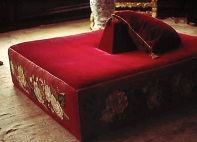
11.00 – 11.30 Welcome, coffee and registration
11.30 – 12.00 Mary M Brooks, Durham University,‘..beauty’s waste hath in the world an end’: Decay, Conservation and the Making of Meaning in the Museum
12.00 – 12.30 Ksynia Marko, Rachel Langley and Philippa Sanders, Textile Conservation Studio, National Trust,Conserving Penelope with Patience and Perseverance: a case history of a large 16th Century Appliquéd Hangingfrom Hardwick Hall
12.30 – 13.00 Student five-minute presentations:
Jenny Evans, University of Wolverhampton,The Hodson Shop Project: Unworn and Everyday Dress in the Museum
Madeleine Green, University of Wolverhampton,Building a Collection from the Souvenir: Travel and Domestic Display in the Long Eighteenth-Century
13.00 – 14.00 Lunch
14.00 – 14.30 Miriam Ali-de-Unzaga, Visiting Scholar at the The Papyrus Museum, Vienna,The Material…
View original post 82 more words
